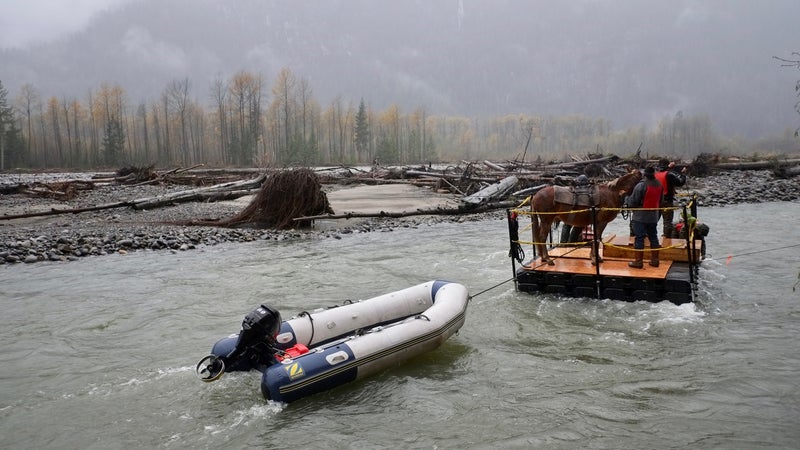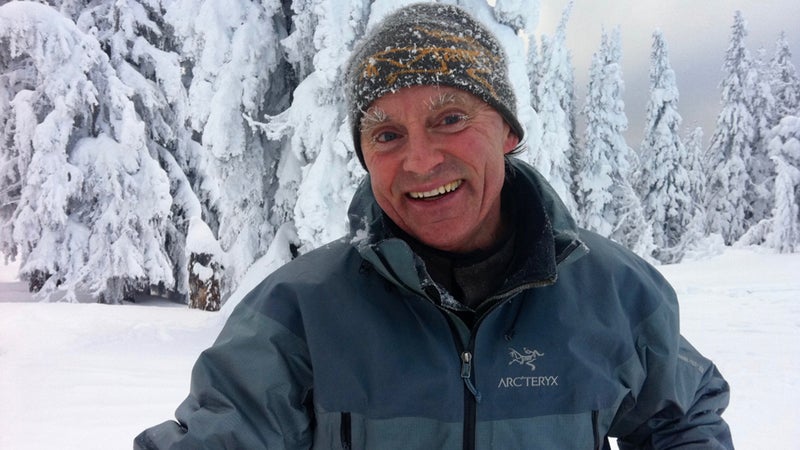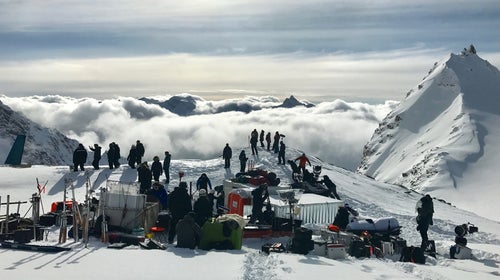Robin Mounsey is the guy who keeps Hollywood survival movies honest. As a location manager, he finds remote settings for film shoots, safely shepherds everyone into and out of extreme conditions via helicopter, and then helps ensure everything looks realistic in postproduction. For decades, Mounsey has guided 100-person film crews around the Arctic and countless mountain ranges for blockbusters like and .
But none of the films he’s worked on received more buzz than , which pitted Leonardo DiCaprio against a hungry grizzly in the 19th-century wilds of the Missouri Territory. “The film was amazing because of the visuals,” Mounsey says. “I was specifically instructed to not end my search at the end of the road, but to look beyond.”
With 12 Academy Award nominations and three wins in 2016, The Revenant augured a new wave of survival movies. Since then, Mounsey has led crews into British Columbia for the plane-crash survival romance , starring Idris Elba and Kate Winslet, and to the Canadian Rockies for the filming of Alpha, an ice-age epic about an abandoned boy and a wolf. Premiering August 17, Alpha might be the most compelling wilderness adventure to come out of Hollywood since The Revenant—if the production company, the new billion-dollar-backed Studio 8, can deliver.

Mounsey, a 63-year-old native of B.C., is so in demand because he is one of the few people in the business who can find the perfect location for a film and then help you survive it. “Studios put me in a box as a location manager,” says the former Outward Bound instructor. “Really, I’m a hired gun. They hire me, and I just figure it all out.” Mounsey’s outdoor feats began during his teenage years in the 1970s. He started rock climbing in Yosemite when he was 15—buying old-school oval carabiners from Yvon Chouinard—and eventually became to do a four-pitch chimney chute up Mount Grimface, a granite wall near his childhood home in B.C. After stints as a rafting and climbing guide, park system employee, and avalanche-control consultant across North and South America, Mounsey got invited to assist on small movie projects seasonally. A much more lucrative outdoor career soon followed as Mounsey worked his way up to location scout and manager on outdoor classics like .
These days, he travels ten months out of the year to the farthest reaches, working on three or four projects at a time. “[Mounsey’s] not just a guy who brings a lot of trailers and knows how to winterize them,” says Frank Marshall, the Oscar-nominated producer of and director of Alive, which he and Mounsey worked on together in the Canadian Rockies in the early 1990s. “I can talk to him creatively, and he’ll figure out the way to do it. But when he says we have to get off the mountain, I don’t say, ‘Just one more shot!’”
Director Hany Abu-Assad had a similar experience on location for The Mountain Between Us. “Robin cares about humans,” he says. “His crew, safety, the movie, and art—he is a full human being.”

The job has changed substantially with the advent of digital camera technology. Filming digitally allows for flexibility in lower-light situations, for example. “A lot of directors of photography are choosing not to light exterior work, whereas in the past a lot of them chose to light it,” Mounsey says. Advancements in outdoor apparel have also made it easier to suit up for more extreme climes. “On everything from location scouts to shoots, I have crews who make sure that everybody dresses right. We didn’t used to have a lot of that light, compact stuff. It’s been a huge benefit.”
Still, even the best gear hasn’t made the job any easier, which Abu-Assad learned on his recent high-altitude experience with Mounsey. “When you visit for the first time, you think, ‘Oh my god, this is stunning.’ But when you later have to stand a whole day in the cold on a shoot, it’s devastating. One of the characters cries in the shower in The Mountain Between Us—that’s me, too; I did that.” Like many of the directors Mounsey works with, Abu-Assad eventually came around on the outdoors. “We do it for the beauty,” he says. “When I see the results, I don’t feel the pain anymore or the harshness, just the beauty.”
Indeed, the success of on-location filming in The Revenant and other blockbusters like Star Wars seems to have emboldened the white-shoed slicks running Tinseltown, who before might have balked at the myriad variables and unpredictable costs involved in wilderness productions. “We’re heading into more and more extreme places,” says fellow location scout Per-Henry Borch, who recently assisted a shoot in western Norway’s fjords for the newest Mission Impossible movie. “Directors and producers want locations that people haven’t seen before. The Revenant helped open their eyes to that value.”
Mounsey says that after The Revenant, he started receiving more calls about similarly ambitious projects set in the wilderness. While he had to soothe some concerns about rumors surrounding the film’s chaotic production (which he maintains are “bullshit”), the interest has made Mounsey optimistic about the future of survival films in Hollywood. Frank Marshall, for example, recently signed on to produce a film called The Longest Night, about the largest Coast Guard rescue in history. “I am drawn to stories about ordinary people in extraordinary situations,” Marshall says. And he will make sure it’s shot outside. “The movies are always magic, but the more realism you’re working with, the more magical they can be.”


